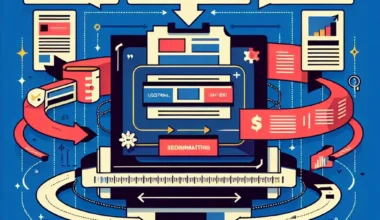Understanding the Evolution of Data Access in Scraping Services
The landscape of web scraping Software as a Service (SaaS) platforms has undergone significant transformation in recent years. Traditional REST APIs, while functional, often present limitations that modern data-hungry applications struggle to overcome. Enter GraphQL – a query language and runtime that’s revolutionizing how scraping services deliver data to their clients.
GraphQL endpoints in scraping SaaS represent a paradigm shift from the conventional approach of fixed data structures to flexible, client-driven queries. This technology enables users to request exactly the data they need, when they need it, without the overhead of unnecessary information transfer.
The Technical Foundation of GraphQL in Scraping Infrastructure
Implementing GraphQL endpoints in a scraping SaaS architecture requires careful consideration of several technical components. The schema definition serves as the contract between the scraping service and its clients, outlining available data types, queries, and mutations.
Unlike traditional REST endpoints that return fixed data structures, GraphQL allows clients to specify their exact requirements through a single query. This approach is particularly beneficial for scraping services that aggregate data from multiple sources, as it eliminates the need for multiple API calls and reduces bandwidth consumption.
Schema Design Considerations for Scraping Data
When designing GraphQL schemas for scraping services, developers must account for the dynamic nature of web data. The schema should be flexible enough to accommodate varying data structures while maintaining type safety. Key considerations include:
- Defining scalable data types that can handle diverse content formats
- Implementing proper error handling for unavailable or corrupted data
- Creating efficient resolvers that optimize data fetching operations
- Establishing clear relationships between different data entities
Performance Advantages of GraphQL Over Traditional REST APIs
The performance benefits of GraphQL endpoints in scraping SaaS are multifaceted and significant. Reduced over-fetching stands as one of the most compelling advantages. Traditional REST APIs often return complete data objects, regardless of what the client actually needs. This results in unnecessary bandwidth usage and slower response times, particularly problematic for mobile applications or bandwidth-constrained environments.
GraphQL’s ability to batch multiple requests into a single query dramatically reduces the number of round trips between client and server. For scraping services that aggregate data from numerous sources, this batching capability can result in substantial performance improvements.
Real-Time Data Streaming and Subscriptions
Modern scraping SaaS platforms increasingly require real-time data delivery capabilities. GraphQL subscriptions provide an elegant solution for streaming live data updates to clients. This feature is particularly valuable for monitoring services, price tracking applications, and social media analytics platforms that require immediate notification of data changes.
Implementation Strategies for Scraping SaaS Providers
Successfully implementing GraphQL endpoints in a scraping SaaS requires strategic planning and careful execution. The migration from REST to GraphQL doesn’t have to be an all-or-nothing approach; many successful implementations begin with a hybrid model that gradually introduces GraphQL capabilities alongside existing REST endpoints.
Data Layer Optimization
The efficiency of GraphQL endpoints heavily depends on the underlying data layer architecture. Scraping services must implement intelligent caching mechanisms that can handle the dynamic nature of GraphQL queries. DataLoader patterns become crucial for preventing N+1 query problems, especially when dealing with nested data relationships common in scraped content.
Database optimization strategies should account for the unpredictable query patterns that GraphQL enables. Traditional database indexing strategies may need revision to accommodate the flexible querying capabilities that clients will expect.
Security Considerations and Rate Limiting
GraphQL’s flexibility, while powerful, introduces unique security challenges that scraping SaaS providers must address. The ability for clients to construct complex, nested queries can potentially lead to resource exhaustion attacks if not properly controlled.
Implementing query complexity analysis becomes essential for preventing malicious or poorly constructed queries from overwhelming the system. This involves analyzing the computational cost of queries before execution and rejecting those that exceed predefined thresholds.
Authentication and Authorization Frameworks
GraphQL endpoints require sophisticated authentication and authorization mechanisms that can operate at the field level. This granular control is particularly important for scraping services that offer different data access tiers or need to comply with various data protection regulations.
- Field-level permissions based on user subscription levels
- Dynamic authorization rules that consider data source restrictions
- Audit logging for compliance and security monitoring
- Token-based authentication with proper expiration handling
Client-Side Benefits and Developer Experience
From a client perspective, GraphQL endpoints in scraping SaaS platforms offer unprecedented flexibility and developer experience improvements. The strongly-typed schema enables automatic code generation for various programming languages, reducing development time and minimizing integration errors.
The introspective nature of GraphQL allows developers to explore available data and operations through interactive tools like GraphiQL or GraphQL Playground. This self-documenting aspect significantly reduces the learning curve for new users and accelerates the integration process.
Frontend Integration Advantages
Modern frontend frameworks and libraries have embraced GraphQL with sophisticated client libraries that handle caching, optimistic updates, and state management. For applications that consume scraped data, this means more responsive user interfaces and better overall user experience.
Scalability and Infrastructure Considerations
Scaling GraphQL endpoints in a scraping SaaS environment presents unique challenges and opportunities. The unpredictable nature of client queries requires infrastructure that can adapt to varying load patterns and query complexities.
Horizontal scaling strategies must account for the stateless nature of GraphQL resolvers while ensuring efficient data fetching across distributed systems. Container orchestration platforms like Kubernetes can provide the flexibility needed to scale individual components based on demand.
Monitoring and Observability
Comprehensive monitoring becomes crucial when operating GraphQL endpoints at scale. Traditional API monitoring approaches may not provide sufficient insight into GraphQL performance characteristics. Key metrics include:
- Query complexity distribution and execution times
- Field-level performance analytics
- Resolver efficiency and data source utilization
- Client query patterns and optimization opportunities
Industry Adoption and Future Trends
The adoption of GraphQL in scraping SaaS platforms reflects broader industry trends toward more flexible and efficient API designs. Major technology companies have successfully implemented GraphQL at scale, demonstrating its viability for high-traffic, data-intensive applications.
Emerging trends suggest that the future of scraping SaaS will increasingly rely on GraphQL’s capabilities to provide personalized data experiences. Machine learning algorithms can analyze client query patterns to optimize data pre-fetching and caching strategies, further improving performance.
Integration with Modern Development Workflows
The ecosystem around GraphQL continues to evolve, with new tools and frameworks emerging regularly. For scraping SaaS providers, this means access to increasingly sophisticated development and deployment tools that can accelerate time-to-market for new features.
Conclusion: The Strategic Advantage of GraphQL Implementation
Offering GraphQL endpoints in scraping SaaS platforms represents more than a technical upgrade – it’s a strategic advantage that can differentiate providers in an increasingly competitive market. The combination of improved performance, enhanced developer experience, and greater flexibility positions GraphQL as a crucial technology for the future of data extraction services.
Organizations considering this transition should approach implementation thoughtfully, with careful attention to security, scalability, and client needs. While the initial investment in GraphQL infrastructure may be significant, the long-term benefits in terms of client satisfaction, system efficiency, and competitive positioning make it a compelling choice for forward-thinking scraping SaaS providers.
As the demand for real-time, flexible data access continues to grow, GraphQL endpoints will likely become not just an advantage, but a necessity for scraping services that want to remain relevant in the evolving digital landscape.






